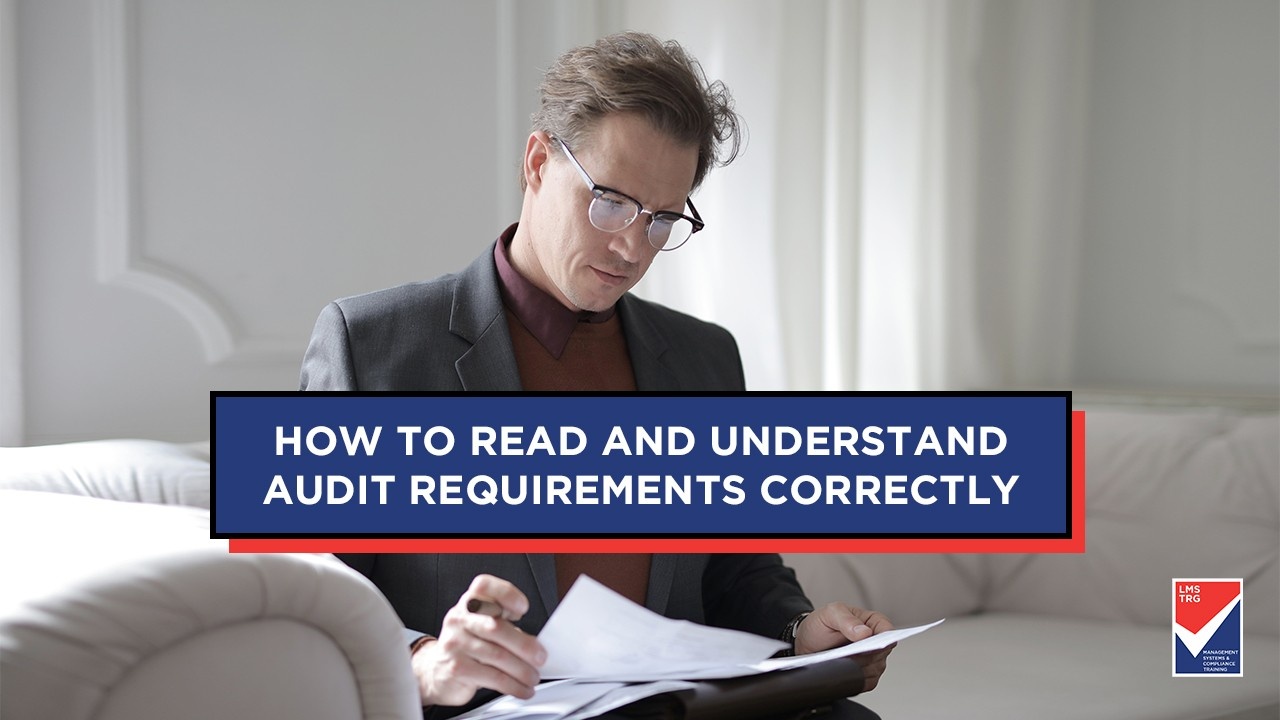How To Read and Understand Audit Requirements Correctly

As the definition suggests, auditing is defined as the on-site verification activity, such as inspection or examination, of a process or quality system, to ensure compliance with requirements. The seven steps will help you understand the requirement more easily and focus on what needs to be verified.
An audit can apply to an entire organization or be specific to a function, process, or production step. Some audits have special administrative purposes, such as auditing documents, risk, or performance or following up on completed corrective actions. That’s why it is so important to understand the audit requirements. Here are seven steps to help you read and understand any audit requirement:
1) Read the standard carefully and slowly
The first step is to read the clause of the standard carefully and slowly and try to understand it. Normally the clauses are lengthy and you may be distracted while reading them. Divide it into smaller portions. Read it sentence by sentence and repeat it for yourself.
2) Write down the title of the clause and read it one more time
The clause is written to explain a condition about the title. It is all about the requirements relevant to the title. If you get lost in the middle of reading, go back and read the title one more time.
3) Extract the facts of the clause title
The requirements have been written to express a condition that the organization must meet. These conditions are in the context of the clause title. It is all about that specific title. Read it carefully and focus on the facts of the clause title.
4) Highlight the verbs
Looking for the below verbal forms. In ISO 9001:2015, ISO 14001:2015 or ISO 45001:2018 Standards, the following verbal forms are used:
— “shall” indicates a requirement;
— “should” indicates a recommendation;
— “may” indicates permission;
— “can” indicates a possibility or a capability.
Information marked as “NOTE” is intended to assist the understanding or use of the document.
These four verbs give auditors an indicator of severity. For example, where you see "shall", there must be evidence available to support the implementation, whereas for the other verbs, a piece of evidence is "nice to have".
5) Rewrite the requirements in a simple language or write a checklist
Writing helps you reflect on the topic as well as helps you remember better. When writing, it allows us to take a bird's-eye view. You can step back and revisit your thoughts by re-reading what you wrote. Divide it into smaller portions, and write the requirements in a more straightforward language.
6) Prepare your questions accordingly
You have done a great job so far. Turn lengthy, complicated requirements into a smaller portion. It is now time to turn these smaller portions into questions.
Asking the right question from the right person during the audit is important in helping you understand the processes and gather objective evidence.
Always start the conversation by asking for a bit of background. If needed, clarify your questions and acknowledge that you have understood their response.
7) Look for the objective evidence
Start asking the questions you have prepared earlier. Look for objective evidence to demonstrate the compliance of the organization. Note-taking is an important factor in an audit. Keeping precise notes lets you remember what you have seen and what still needs to be asked.
You may be concerned that taking notes could give the auditees a wrong impression and they may think that you have found faults. It is a very good idea to let them know the purpose of the notes. Try not to hide your notes from the auditee. Explain that it is part of the process. Note both positive elements and findings/gaps, as you need both to prepare a detailed and accurate audit report.
Now you have learned the seven steps that help you understand the requirements more easily so you can focus on what needs to be verified.
Who We Are
At core, LMS TRG is a compliance consulting and training organisation that builds and delivers powerful and practical products for people and businesses. Born and bred in Melbourne, Australia with an amazing team of expert auditors, consultants, and entrepreneurs.
Our area of expertise lies in providing training and guidance on compliance with the National Disability Insurance Scheme (NDIS) and the International Organisation for Standardisation (ISO). We also assist organisations in implementing effective management systems that are tailored to their specific needs and requirements. Our comprehensive approach to compliance training and management systems ensures our clients have the knowledge and tools necessary to meet regulatory requirements and industry standards. We are committed to helping our clients achieve success and maintain a culture of excellence in their operations.
We Care for each other, our members, and our society.
We Dare to discover and experiment, trying to be different and be fearless, and innovative.
We share our knowledge and experience, work together and continue to support our members.
Join The Community
Our email content is full of value, void of hype, tailored to your interests whenever possible, never pushy, and always free.


